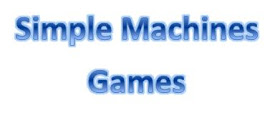All about Hammers, Nails, Screwdrivers, Screws, and Safety Goggles
Vocabulary
Vocabulary
- safety goggles (a must when working with tools)
- hammer, nails
- flathead screwdriver, Phillips screwdriver, flathead screws, Phillips screws
- tools and fasteners
Introduction
- Have students brainstorm different hand tools. (hammer, screwdriver, wrench, pliers, saw)
- Ask why people use tools. (Tools make our jobs easier. They help us build or fix things.)
- Explain that specific tools have specific jobs.
- Ask if they know what the job of a hammer is. (to pound nails)
- Ask if they know what the job of a screwdriver is. (to turn, tighten, or loosen screws)
Choose the activities that you feel are appropriate for your students' age or ability level. They are in no particular order.
- Pass out different size nails and screws for children to observe. (Zip-lock bags or small plastic containers work well for storage.) (If possible show flathead and Phillips screws.)
- Have the kids handle the nails and screws and observe the differences and similarities.
- Have children list the similarities and differences. (orally or written)
- Both the nail and screw are fasteners and hold things together.
- Both are made of metal.
- The nail has a flat body. ... The screw is grooved .
- The nail has a flat head. ... The screw has a groove(s) in its head and sometimes is rounded.
- The nail is used with a hammer.
- The screw is used with a screwdriver.
- The nail is pounded into wood.
- The screw is turned into wood.
- Older students can make a Venn Diagram comparing nails and screws.
Activity 2
- Give each student a pencil and piece of cardboard.
- Have them place the piece of cardboard down on a flat surface (desk).
- Next they should press the eraser end of a pencil down on the cardboard.
- Then they should press the pointed end of the pencil down onto the cardboard.
- Ask if the results were the same. Ask how they were different.
- Explain that the pointed end of the pencil worked like a wedge and pushed into the cardboard just as the pointed end of a nail (or screw) pushes into wood.

Activity 3
- Read some books to the younger students about hammers and screwdrivers.
- Possible choices: Fix it with Bob: Bob's Handy Hammer and Fix It with Bob: The Very Busy Day (Screwdrivers) published by Golden Books or If I Had a Hammer and If I Had A Saw published by Modern Publishing.
- Older students can research the different types of hammers and make a timeline of the history of nails back to ancient times.
Activity 4
- Have children observe, sketch, and label the plastic hammers and screwdrivers (flathead and Phillips).
 |
| Phillips (red) and flathead (yellow) screwdrivers |
- Younger students could trace and color the tools.
- Discuss how the screws, Phillips (+) or flathead (-), have to match the proper screwdriver.
 |
| Phillips Screwdriver + Phillips Screw |
- Discuss how nails are removed with the claw end of a hammer and screws are removed by turning the screwdriver to the left.
- Teach children the carpenter's catchy saying: "Righty Tighty, Lefty Loosey" so they will never forget which way to turn a screwdriver when tightening or loosening a screw. Have the children practice the twisting motion.
Activity 5
- Have the students put on protective eyewear (SAFETY GOGGLES) and practice with the plastic hammers and screwdrivers. The kids like wearing the goggles, they help protect their eyes, and it will be good practice for when they use real tools.
- One idea for younger students is to use plastic hammers and golf tees or plastic pegs hammered into Styrofoam. (I have heard of teachers also using clay, bars of soap, pumpkins, and watermelons instead of Styrofoam.) What do you use?
- Plus there are plenty of kids' tool kits that will give the students practice in using hammers and screwdrivers (and wrenches and pliers).
- Older students and their teachers could visit younger grades and assist the children.
- Older students could sketch and design something that they would like to build if they had the proper tools and fasteners.
- Students could also attend a Saturday workshop for KIDS at Home Depot or Loews with their parents. Parents or teachers could call their local store for a schedule of dates and times.
- Older students could design and create a book (alphabet or other) or slide show on tools and fasteners for younger kids. They could include pliers, wrenches, nuts and bolts, etc. Then they could read their books or present the slide shows to the younger kids.




















































